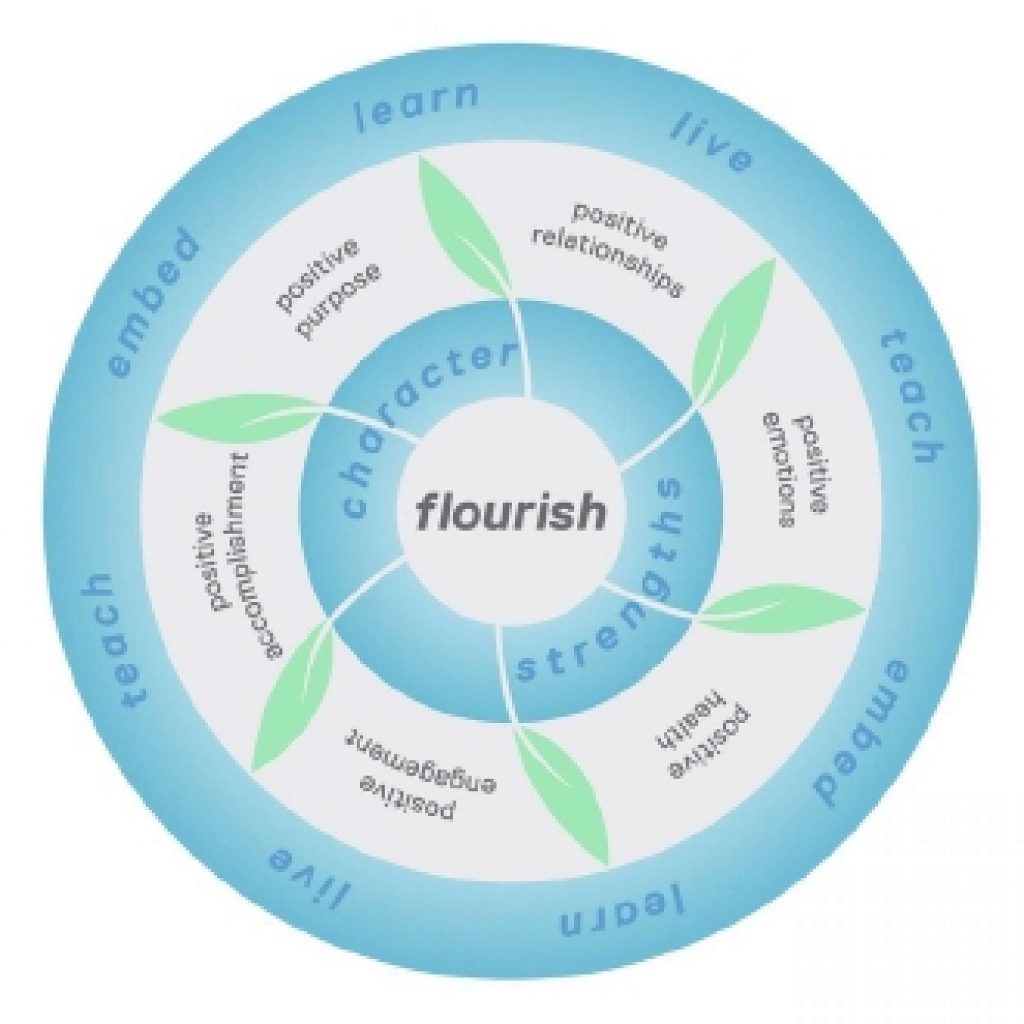
Positive Psychology
What is Positive Psychology (PP)?
Introduction to Positive Psychology: Perspectives on Wellbeing and its practical application
A summary by Elijah-Isaac St. Valentine
Prologue:
In late 2017 I completed my Postgraduate studies in Positive Psychology with Central Queensland University (CQU) and that was indeed a seminal moment as I along with a handful of other students made history as we became the inaugural graduates in the discipline of Positive Psychology. Along with the University of Melbourne, CQU till this day are the only two universities in Australia to my knowledge that offers Positive Psychology education at a Postgraduate level.
More importantly the pedagogy of Positive Psychology exemplifies the pursuit of well-being as it engages in the pursuit of journeying into one`s own sense of self and thus exploring scientific mediums that facilitate these processes of well-being. Unfortunately, traditional psychology, also known as mainstream psychology, places too much emphasis on psychopathology and diagnoses and thus gives credence on the disease model. Positive Psychology does not negate a person`s psychopathology or diseases but what it does is to uphold the many empiricism and research findings that states that there is a lot a person can do by exploring their own sense of self and thus embark not just on the process of healing and recovery but indeed on a thriving and flourishing life guided by meaning making and purpose.
Accordingly, for me as an Integrative Psychotherapist synergizing element of Positive Psychology is an important part of my therapeutic work when I am in session with my clients. It is a very privileged position to be in.
Here`s a summary of Positive Psychology.
What is Positive Psychology (PP)?
PP is about scientifically informed perspectives on what makes life worth living. It focuses on aspects of the human condition that lead to happiness, fulfilment, and flourishing (The journal of Positive Psychology, 2005). It is an umbrella terminology for the study of positive emotion, positive character, and positive institutions (Seligman & Csikszentmihalyi, 2000). PP does not seek to negate pathology or the disease model, but rather seeks to improve quality of life for individuals and groups to flourish. Strengths of character, and positive experiences such as a satisfied life are among the central concerns of positive psychology (McCullough & Snyder, 2000; Seligman, 2002., (S. J. Lopez & C.R. Snyder, 2009.
Key theoretical and empirical developments in positive psychology
The genesis of PP as it is known today has its origins in the keynote speech made by Martin E.P. Seligman in 1998 upon his election as the President of the American Psychological Association (APA). As his presidential initiative, Seligman invoked psychology`s forgotten mission of building human strength. He reminded his audience that pre WW11, psychology had three missions: curing mental illness, making the lives of all people more fulfilling, and identifying and nurturing high talent. Seligman went on to articulate that in the half a century that followed, whilst psychology had made great inroads in the understanding of, and therapy for mental illness, the two other missions of; ‘making the lives of all people better,’ and ‘nurturing genius,’ were all but forgotten. He argued that psychology had become a, ‘Victimology’, and that human beings were seen as, a ‘passive foci’, (Seligman, 1998). To this end, Seligman issued a call and posited that, ‘Psychology is not ‘just the study of ‘weakness and damage’ and that it is also the study of, ‘strength and virtue’ (Seligman, 1998). Along, with Csikszentmihalyi, he followed up with a seminal article in a special issue of the American Psychologist (2000), introducing PP as a ‘movement’ and a corrective to the dominant approach of mainstream psychology, the ‘disease model.’ The fifteen articles in this issue served as an overview of PP and explored three main topics; firstly; positive experiences, which focuses on subjective well- being, optimal experience, optimism, and happiness; second, positive personality and its focus on traits such as self- Determination, wisdom, mature defenses, and exceptional performances such as creativity and talent. And the third thread explores the above experiences in a ‘social context’ such as the contributions of social relationships to happiness (cf. Seligman and cf. Seligman, American Psychologist (2000). The origin of PP however predates Seligman & Csikszentmihalyi, and others of these ‘movement’. Indeed, the historical origins of PP can be traced back to the Ancient Greeks and many others along the way.
History of PP
Aristotle`s (384-322 BCE), treatises on eudaimonia’ (happiness) literally, “having a good guardian spirit”. Along with his teacher Plato, he described the, ‘deeper and more balanced’, for the ‘good life’, and the importance of, morality,and virtue. They articulated that, that a person is ‘truly happy when they have what is worth desiring’, and fulfills one`s potential, (Linley & Joseph, 2004)
Aquinas (1225-1274), similarly, wrote about ‘virtue’, during the Renaissance, (Linley & Joseph, 2004) William James (1902), explored the role that, ‘transcendent experiences’ may play in, ‘stimulating optimal human functioning’ (Rathunde,2001., Linley & Joseph, 2004), as well as the notion of ‘healthy-minded optimism’, (Kristjansson, 2010). Carl Jung (1933), conceptualization of ‘individuation’, explored, people ‘becoming all they can be’, (Linley & Joseph, 2004). Marie Jahoda (1958), and her 6 constructs of, ‘positive mental health’, bearing much resembles to PP as espoused by Seligman, Csikszentmihalyi and others, (Linley & Joseph, 2004).
Allport (1961), on ‘mature individual’, (Linley & Joseph, 2004).
Carl Rogers (1963), and his construct of the ‘fully functioning person’, (Linley & Joseph, 2004). Abraham Maslow (1968), and his concept of self-actualization (Hefferon & Boniwell, 2011). PP has common interest with humanistic psychology as espoused by Rogers and Maslow, though they are critical of its lack of empiricism. Indeed, it was Maslow, who first coined the label, ‘positive psychology’ in the early 1950s (Kristjansson, 2010).
Focusing on the negative
The science of psychology has been far more successful on the negative than on the positive side; it has revealed to us much about man`s shortcomings, hiss illnesses, his sins, but little about his potentialities, his virtues, his achievable aspirations, or his psychological height. It is as if psychology had voluntarily restricted itself to only half its rightful jurisdiction, and the darker, meaner half.” Maslow, 1954)
PP has a long lineage.
What Aristotelians call ‘eudaimonic well-being’, Maslow conceptualizes it as ‘self-actualization’, and positive psychologists now call ‘happiness’, (Kristjansson, 2010).
Coming back to PP in its current form Positive psychologists as previously mentioned aims at replacing the disease-remedy model of human functioning with a wellness-enhancement model. Accordingly, ‘human goodness and excellence’ are seen as ‘authentic’ and therefore as inspiring objects of scientific inquiry-just as ‘disorder and distress’, (Kristjansson, 2010). As Seligman states, happiness can be harnessed and nurtured by using many ‘strengths’ and ‘traits’ a person has such as kindness, originality, humor, optimism, and generosity (Seligman).
Key theories of PP
At the subjective level, PP is about valued subjective experience: well-being, contentment, and satisfaction (in the past); hope and optimism (for the future); and flow and happiness (in the present). At the individual level, PP is about positive and individual traits: the capacity for love and vocation, courage, interpersonal skill, aesthetic sensibility, perseverance, forgiveness, originality, future mindedness, spirituality, high talent, and wisdom. At the group level, it is about civic virtues and the institutions that move individuals toward better citizenship: responsibility, nurturance, altruism, civility, moderation, tolerance, and work ethic (Seligman & Csikszentmihalyi, 2000). Seligman (2002) proposes Three Pathways or pillars to happiness, The Pleasant Life, The Engaged Life and finally, The Meaningful Life. S. J. Lopez & C.R. Snyder, 2009).
- The pleasant Life
- Positive subjective experience The Importance of Cultivating Positive emotions such as Fredrickson`s Broaden-and-Build Theory, 2001
- Positive Emotions; about the past (gratitude, forgiveness), present (mindfulness, savoring) and the future (hope and optimism.
- The Engaged Life
- Positive Individual Traits
- Diagnostic and Statistical Manual
- Values in Action (VIA) classifications of Strengths and Virtues encompassing; Wisdom, Courage, Love, Justice, Temperance &Transcendence
- The Meaningful Life
- Positive Institutions
- And, using one`s signature strengths towards something beyond one`s self such as, community, nation, world, etc.
- The PERMA Model
- As PP continues to evolve, Seligman`s theoretical model of happiness (PERMA), 2011, was introduced. It serves as important building blocks of well-being and happiness (Authentic Happiness, 2017).
- P-Positive Emotions-feeling good
- Engagement – being completely absorbed in activities
- Relationships – being authentically connected to others
- Meaning – purposeful existence
- Achievement – a sense of accomplishment and success
Goals of Positive Psychology
Seligman, Csikszentmihalyi and others in the movement of PP have identified 4goals.
- Fostering better prevention by buffering
- Supplementing, available training for therapy and concomitantly identifying and building strengths ‘explicitly and systematically
- To mitigate the ‘victimology’ label so pervasive, and finally
- Moving mainstream psychology from a culture of ‘egocentric’ to the ‘philanthropic’ (Seligman, 2003; Tillier, W.D, 2015,
References
Authentic Happiness, (2017). PERMA-Introducing a New Theory of Well-Being, Positive Psychology Theory, University of
Pennsylvania
Hefferon, K & Boniwell, I. (2011). Positive Psychology, Theory Research and Applications. Open University Press, New York, USA
Maslow, A, (Maslow, 1954), p.354, Toward a Psychology of Being. Sublime Books 2014)
Kristjansson, K. (2010), Positive psychology, Happiness, and Virtue: The Troublesome Conceptual Issues, Review of General
Psychology, American Psychological Association, 1089-2680, 10
Linley, A.P & Joseph, S. (2004) Positive Psychology in Practice. John Wiley & Sons, Inc
Lopez, S.J & Snyder, C.R. (2009). The Oxford Handbook of Positive Psychology, Oxford University Press
Seligman. M.E.P. (2011). Authentic Happiness-Using the New Positive Psychology to Realize Your Potential for Lasting Fulfilment,
Random House Australia.
Seligman, M.E.P. (1998). Building human strength: psychology`s forgotten mission. American Psychological Association, Vol 29, 1
Seligman, M.E.P & Csikszentmihalyi, M. (2000). Positive Psychology, An Introduction. American Psychologist, Vol 55, 1, 5-14
Tillier, W.D. (2015). Positive Psychology. University of Calgary.
Positive Education
Positive Education and Positive Psychology for Adolescents and Young Adults.
The scientific study of optimal human functioning and what makes life worth living and thus examining the psychology of characteristics, conditions, and processes which lead to flourishing.
These challenges faced by Adolescents hold a special interest in my heart and practice as I did one of my Research Thesis on Positive Education (a branch of Positive Psychology) for one of my Master`s degree. Please see my research thesis in the “Insights & Resources” section. Accordingly, the very profound therapeutic affects of Positive Education and Positive Psychology is integral and thus embedded in my practice when working with my clients and specifically when working with young person’s. Therefore, “Developing the character traits of Resilience” is a central framework of my approach.

“What is important is not what happens to us, but how we respond to what happens to us.”
John-Paul Sartre
Positive Education
Here`s a summary of Positive Education.
In 2008 a remarkable and world`s first longitudinal experiment took place in Victoria whereby Geelong Grammar School became the first institution to implement a school wide Positive Education Intervention Strategies across their four campuses.
Positive Education (Pos Ed)
Pos Ed is described as education for both traditional skills and for happiness and available research further posits that ‘traditional education’ may be augmented by approaches that nurture wellbeing and promote good mental health and forms the basis of what is conceptualized as the ‘new prosperity’ which values both wealth and well-being. Pos Ed seeks to combine principles of Positive Psychology with best practice teaching and with educational tools to promote optimal development and flourishing in the school setting`.
Martin Seligman who founded the branch of Positive Psychology in 1998 further posit that positive psychology interventions (PPI`s) that promotes resilience, activates positive emotions, facilitates engagement and meaning making are teachable in classroom settings and he further enunciate its importance for three reasons: firstly, as a buffer against depression and anxiety; secondly, promoting life satisfaction and thus flourishing, and finally, as a resource to help learning and engaging in creative thinking.

Fast forward 15 -years later Pos Ed has become an integral part of Geelong Grammar School (GGS). It is implicitly and explicitly inculcated in the culture of GGS. A longitudinal evaluation of years 9, 10 and 11 students in 2013 offers support for the ‘effectiveness of continued Pos Ed especially concerning its therapeutic benefits in relations to, ‘higher levels of psychological and social well-being’ of GGS students.

At the very heart of Pos Ed is the PERMAH model of flourishing and it is depicted visually as six “leaves coming together (see figure below, The PERMAH model of Positive education). The elements are positive relationships, positive emotions, positive engagement, positive accomplishment, positive purpose, and positive health.
The PERMAH model of Positive Education crystalizing in the proceses emergent for thriving and floourishing.

At the very core of these elements are the framework of “Flourish” which in turn are surrounded by a person`s “character strengths” (Values in Action, VIA). Coming back to Pos Ed, VIA was adapted and thus modified with five strengths factors pertaining to young persons based on empirical research is exemplified: temperance, vitality, curiosity, interpersonal strengths, and transcendence was utilized.
The transformative experiment undertaken by GGS has now been replicated and implemented by many schools throughout Australia and indeed the world. Add to that the empirical evidence validating the therapeutic efficacy of Positive Psychology and Positive Education Interventions are robust and there are thousands of research findings supporting it`s applications as a therapeutic intervention. One such intervention is the daily and sustained practice of “GRATITUDE”. Available research from the branch of Positive Psychology and Positive Education has found that embedding practices of gratitude consciously and consistently to be positive and significantly correlated in helping people to build resilience. This goes to the very heart of Barbara Fredrickson`s research on the benefits of cultivating Positive Emotions. This is just one example of the therapeutic affects of Positive Psychology and thus Positive Education.
Coming back to my research thesis and supported by robust evidence-based research, the therapeutic affects crystalizing from the science of Positive Psychology and Positive Education is profound. Accordingly, it is an integral part of my practice.
A central tenet of Positive Education and indeed Positive Psychology is the emphasis on building resilience thus being able to adapt and adopt to changing circumstances. This was the area of focus of my research based on the longitudinal and experiential work undertaken by Geelong Grammar. I have found it to be very helpful with the many clients that I have worked with.

